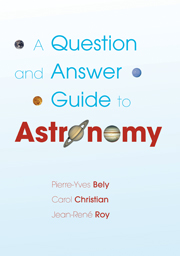Amateur astronomy
Published online by Cambridge University Press: 24 May 2010
Summary
Interested in amateur astronomy? What are the first steps?
Astronomy is not just for professionals – the sky belongs to everyone! Amateur astronomy is a fascinating hobby, running from the simple pleasure of gazing at the night sky, to learning to appreciate the phenomena and mysteries of the Universe, all the way to making quasi professional observations. Perusing books and magazines on astronomy, even studded with spectacular photographs, can never match the emotional impact of engaging directly with the heavens.
Pastime or true passion, here is an activity that is within almost everyone's means. Even the most sophisticated amateur astronomers spend significantly less money on their hobby than do many sportsmen, boating enthusiasts, and golfers. It is important to start out on the right foot, though. If you just rush in and buy a cheap “toy” telescope, you will quickly be disappointed and lose interest. On the other hand, if you acquire the biggest, most expensive instrument on the market, you are likely to find yourself overwhelmed.
The best way to start is to observe the sky with the naked eye from a dark site using a star chart or one of the new handheld devices using GPS technology (such as SkyScout). Once you have learned to find your way in the sky and are familiar with the major constellations and planets, you can move up a step, to binoculars. Standard models, 8 χ 40 or 7 χ 50, are good choices. They are relatively inexpensive, convenient to use, and offer a generous field of view, making it easy to locate objects.
- Type
- Chapter
- Information
- A Question and Answer Guide to Astronomy , pp. 250 - 263Publisher: Cambridge University PressPrint publication year: 2010

